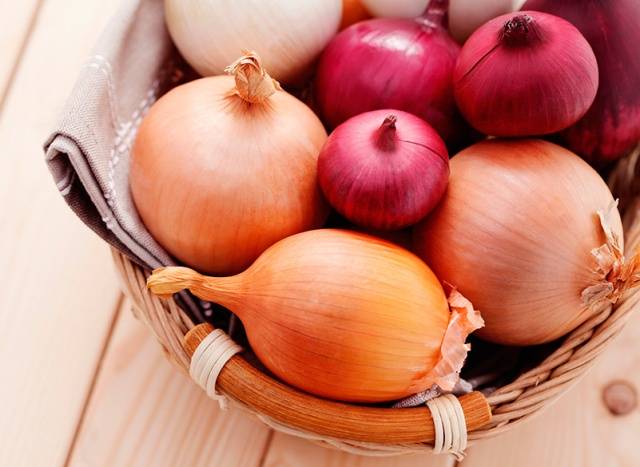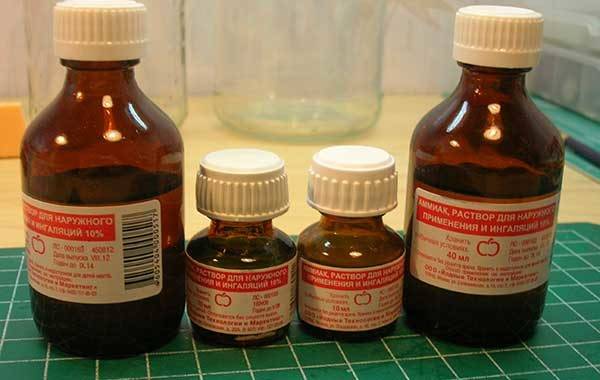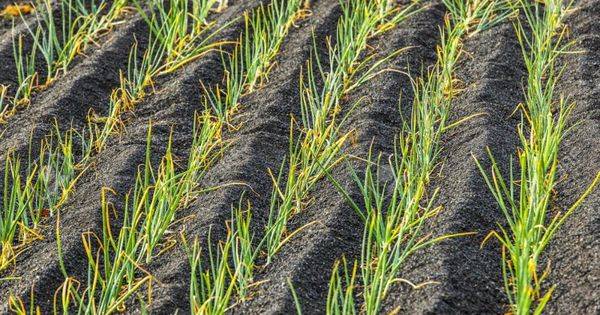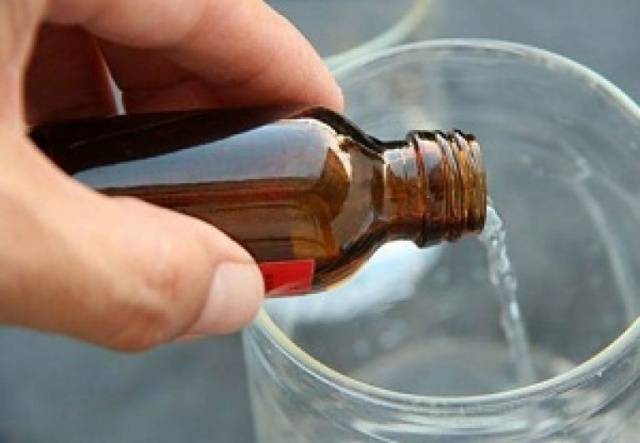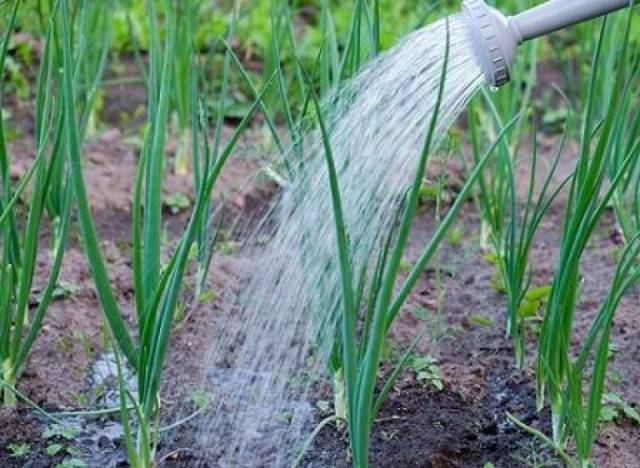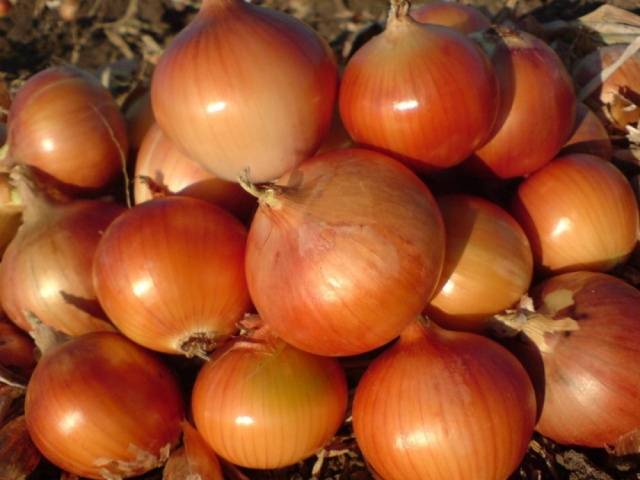Content
One of the main crops grown in our gardens is onion. We eat it all year round and use it almost daily. It is easy to grow onions, but in order to get a good harvest, it cannot be left unattended. This root crop has its own specific diseases and is affected by pests. If you do not recognize them in time and do not take action, the turnip will grow small and will not be stored for long.
Onions take out little fertilizers from the soil, their agronorm is only 19. Many owners ignore top dressing, do not fight pests, arguing this with a desire to get an environmentally friendly product, and then are surprised at the scarcity of the harvest. We do not advocate the thoughtless use of chemistry in unlimited quantities, but we note that no one has canceled the laws of nature or agricultural technology. Top dressing onions ammonia does not lead to the accumulation of nitrates, moreover, it protects it from pests. This article will tell you how to use it.
Fertilization with ammonia onions
Ammonia, or ammonia, is a clear liquid with a strong pungent odor, which is ammonium hydroxide dissolved in water. In fact, it is a nitrogen fertilizer, it is easily and quickly absorbed by plants; when used in reasonable doses, it does not lead to the accumulation of nitrates. Ammonia does not affect all crops in the same way, for example, the seedlings absorb it almost completely, and it almost does not affect strawberries.
Onions are one of those plants that assimilate ammonia nitrogen well. Using different dosages, you can use a solution of ammonia for root and foliar dressing.
Ammonia in pest control
Using ammonia, we not only feed onions, but also fight against its main pests. Insects cannot tolerate the smell of ammonia, even in the smallest concentration.
To scare off onion flies, it is enough in June-July to water the aisles with an ammonia solution prepared from 10 liters of water and 1 tablespoon of ammonia every week.
The lurker, which is the most dangerous pest of onions, requires two-time watering of the plantings - the first time at the beginning of shooting, the second - 2 weeks later. For this, 25 ml of ammonia is dissolved in 10 liters of water.
Fertilizing onions with ammonia
It is believed that it is impossible to overfeed the plant with an ammonia solution, moreover, its overdose does not lead to the accumulation of nitrates. But ammonia is a caustic compound, it can simply burn turnip or feathers at high concentration. An excess of nitrogen fertilizers always leads to negative consequences - the development of green mass to the detriment of bulb growth, promotes the development of putrefactive bacteria and shortens the shelf life.
When you need ammonia
First of all, ammonia is used for fertilizing onions when nitrogen is urgently needed - foliar dressing is not for nothing called fast. Usually the white tips of the leaves are garlic and onions we take for nitrogen starvation. In fact, there may be several reasons and they should be distinguished:
- If only the tips of the leaves have turned white, the feathers are even and of a normal green color, then the onion lacks copper. Here ammonia will not help - you need to spill the aisles with a copper-containing preparation.
- The feather is not only whitened at the top, but also slightly curled - lack of potassium. You can use any kind of potash fertilizer, even chlorine-containing one - onions and garlic tolerate it well.
- The entire stem becomes white - frost.Here, fertilizing with nitrogen fertilizer is needed, which can also be ammonia.
- Onion feathers have acquired a yellowish or light green hue, and not just white tips - the actual lack of nitrogen. An ambulance is needed here, no fertilizer can cope better and faster than ammonia.
Of course, the white tops of the leaves can serve acidic soil, but we hope that you did not make such an unforgivable mistake and deoxidized the soil before planting the turnip. If not, add calcium nitrate, dolomite flour or lime. But this will only help to cope with excess acidity, and onions require slightly alkaline soils. Pour wood ash over the bed, preparing a solution at the rate of 2 cups per bucket of water.
Preparation of working solution of ammonia
In order not to burn either the leaves or the turnip of the onion with caustic ammonia, it is important to properly prepare the solution. We give recipes for its preparation, assuming that you are using a 25% pharmaceutical product.
- For root watering 3 tbsp. l. ammonia dissolve 10 liters of water.
- For spraying, take 5 tbsp. l. ammonia per 10 liters of water.
The point of spraying is to keep the active ingredient on the onion feathers for as long as possible. For this, an adhesive is added to the working solution, which is sold in any store or shopping center that sells fertilizers. But buying it is not at all necessary, we have everything that is needed to prepare it at hand.
- Add liquid soap or laundry soap previously diluted with a little hot water to the ammonia spray mixture.
- If you are growing onions on a feather, you should not use soap. Add 2 tablespoons to a bucket of water. l. dry mustard.
- You can use the cheapest flea shampoo for dogs as an adhesive for the ammonia solution, but only if you will not eat greens.
Fertilization and processing rules
Ammonia is a volatile compound. If you process onions with a sprayer, then simply do not deliver the working substance to the leaves in the required amount. Water the plants with a regular hole watering can (the spray should be visible, not too shallow).
Foliar treatment with ammonia is carried out in dry, calm weather, early in the morning, at sunset or in cloudy weather. Pour water over the feathers of the onions, being careful not to raise the watering can too high. If you have a large plantation and you still carry out all the treatments with the help of a sprayer, switch it to spray (look at the instructions, even the most primitive manual preparations have such a function).
If you grow onions on a turnip, first pour it with a solution of ammonia at the root, then give 2-3 foliar treatments, and then just water. When the feathers begin to dry out, stop nitrogen feeding altogether.
Precautions
As we noted above, ammonia is a caustic substance. It is, of course, sold in pharmacies and is a medicine, and a cotton swab moistened with a drop of ammonia, due to its pungent smell, can lead to the senses of a person who has lost consciousness. A drop! We are preparing fertilizer for onions using this substance in fairly large quantities. Contact with skin, mucous membranes, or inhalation of ammonia fumes can have serious consequences.
Just wearing latex gloves and a regular respirator is not enough.You should tuck your hair under a hat, wear safety goggles, a plastic apron and a gas mask or special respirator that allows you to work with corrosive volatile substances. Move others to a safe distance.
For all its harmlessness, after a short period of time, at the time of application, this volatile caustic compound can cause enormous harm to your body. You need to be extremely careful with ammonia.
Conclusion
Ammonia can be used as an ambulance for onions and garlic when nitrogen is deficient. It does not convert to nitrates even in case of an overdose, but it is capable of burning the plant. Do not forget about the sense of proportion and precautionary rules - this will allow you to get environmentally friendly products at minimal cost. Have a nice harvest!
